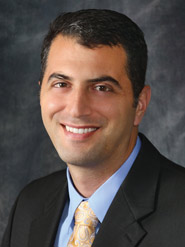Children are not small adults when it comes to youth sports injuries.
by Peter L. Gambacorta, D.O.
A dramatic increase in the number of youth involved in organized sports took place in the 1970s with the enactment of Title 9, which prohibited sex bias in school sports. While Title 9 equalized opportunities for kids, it also resulted in an increase in the number of injuries. The National Youth Sports Safety Foundation estimates that 30 million children and adolescents participate in athletics annually.
Each year, high school athletes account for nearly two million injuries, and nearly twice as many children younger than 14 receive medical treatment for sports-related injuries. According to the National Athletic Trainers’ Association and the Centers for Disease Control and Prevention, roughly 30,000 high school athletes are hospitalized yearly with concussions. Nearly 8,000 young athletes sustain an injury that is bad enough to send them to the emergency room.
The game changed dramatically in youth sports. Young athletes participate at an earlier age, often specializing in a sport. For many athletes, this means playing on multiple teams year-round without periods of rest. The neighborhood pick-up match has given way to organized teams with rigorous schedules. Travel teams, recreational leagues and summer clinics have morphed into year-round commitments, placing young athletes at risk for injuries. The combination of these factors has created the need for a subspecialty in medicine devoted to pediatric and adolescent sports.
Young athletes are at risk for specific injuries as their bodies are still growing and changing, and cannot always be treated with the same techniques used in adults. For example, if a child sustains an anterior cruciate ligament (ACL) tear, the manner in which it is treated will be different for a young adult whose growth plates are closed and a child whose growth plates are still open.
There are several simple things that we can do as parents, coaches, trainers, therapists, and physicians to help prevent our young athletes from experiencing injuries:
- A pre-season physical examination by a pediatrician.
- Instruct athletes to use the correct form and technique on the field with proper warm-ups and cool downs to help decrease the risk of injury.
Most importantly, parents, coaches, trainers, therapists and physicians should encourage our young athletes to speak to us if they are experiencing pain. The old saying of “no pain no gain” does not apply to the young athlete. If pain continues in spite of rest and activity modification, it is important to seek further medical attention to identify the problem.
Common youth injuries are ACL tears, meniscal tears, fractures, knee dislocations, shoulder dislocations, rotator cuff injuries, and little league’s shoulder, to name a few. What’s important when it comes to treating young people is to understand that children are not small adults and the child athlete is not a little adult athlete.
About the Author
Dr. Peter Gambacorta is a board certified orthopedic surgeon at Northtowns Orthopedics, focusing on sports medicine and acute and overuse injuries of the musculoskeletal system in children, adolescents, and adults. He treats pediatric sports injuries, and is team physician for the Buffalo Junior Sabres and several WNY high schools. Northtowns Orthopedics has offices in Alden, East Amherst, Ellicottville, Tonawanda and Williamsville. Call 716-204-2550 or 716-636-1470 and visit www.northtownsorthopedics.com.













